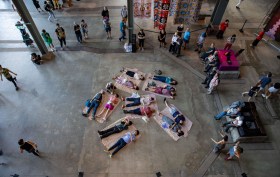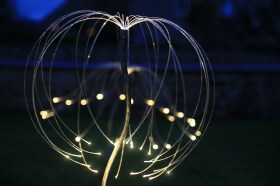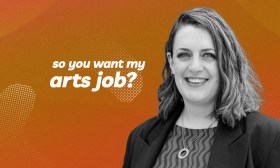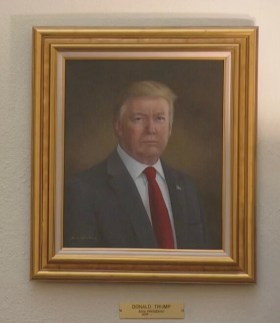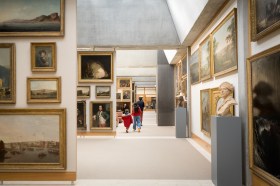Generative Artificial Intelligence has become a polarising creative medium and it’s important to separate the various types, genres and uses of Artificial Intelligence (AI) and look at each use case separately.
For the purpose of this article, we will only be focusing on the role of Generative AI in the creative industry and, more specifically, animated AI-generated art and motion artworks.
In this article:
Ethical, bias and transparency considerations
Ethical considerations within the realm of AI-generated art are intricate and demand careful attention from both creators and users.
A significant facet involves intellectual property concerns, where questions arise about ownership and originality of art generated by AI models, and if these were trained using copyrighted works.
Scrutinising training data for biases is imperative as unchecked biases may perpetuate stereotypes or contribute to the underrepresentation of certain groups in the generated art.
Read: Ageism, sexism and classism: 7 examples of bias in AI-generated images
Additionally, transparency plays a pivotal role, in particular in professional or commercial contexts, necessitating clear communication about the role of AI in the creation process.
Striking a balance between leveraging AI for creative enhancement and preserving the human element in art is a critical ethical consideration related to creative integrity. It is vital to assess the impact of AI tools on traditional artists and the art market, considering factors such as employment and the valuation of “art made by humans” versus “art generated using AI”.
These multifaceted ethical responsibilities underscore the need for a thoughtful and comprehensive approach in navigating the intersection of AI, innovation, copyright and artistic expression.
Generative AI as a creative tool
AI as a creative tool has improved leaps and bounds since its early incarnations. Generating still images that are interesting, sophisticated and photorealistic is now an easy process that can be done by anybody with an interest, some patience and determination.
Video and animation, however, is another story. The various platforms and tools are promising but in many cases are still just a stone’s throw away from being transformational, and that stone hasn’t quite been discovered yet.
In spite of this, Sydney-based creative production company, VANDAL, is combining AI tools in new and innovative ways to create results that are rivalling traditional art and content.
Embarking on a year-long creative journey, VANDAL, at the forefront of technological innovation, has paired art and cutting-edge generative AI to bring to life a groundbreaking AI digital art exhibition.
Natural Rhythms of Australia
Commissioned by Lendlease, VANDAL has unveiled Natural Rhythms of Australia, a world-first, feature length, generative AI digital placemaking project. It was created over the course of a year and utilises a bespoke set of AI tools developed exclusively by VANDAL. The result is a world-first in smooth, ultra-high resolution motion digital art, created using generative AI.
Featuring over 130 minutes of generative motion digital art, the work tells the story of Australia’s flora, fauna and climate across changing seasons. The year-long motion art exhibition showcases a captivating ecological journey through natural and environmental events in Australia.
Across four films, Natural Rhythms of Australia depicts sequential changes and triggers that occur at specific times of the yearly cycle. All generated by means of VANDAL’s custom AI toolset.
Natural Rhythms of Australia was commissioned for the redevelopment of Darling Quarter North (Sydney) and is presented on a 47-square metre ultra high-definition LED array, visible from multiple viewpoints around the precinct for a 12-month period.
VANDAL Animation AI Lead, Joseph Pole explains: ‘AI algorithms, responsible for the generation of the art itself, work from a huge set of unique and custom-trained imagery.
‘Our process of machine learning involved training our AI model with thousands of bespoke, curated images. Our AI engine then processes this dataset to identify patterns and significant features. The “knowledge” gained from “studying” these images gives VANDAL ultimate control and precision in achieving our desired artistic results.’
The inner workings of AI in the creative process
The VANDAL team credit the success of the project to the deep creative knowledge and experience of their AI experts, producers and artists. In fact, VANDAL’s AI team is as large as a traditional production team, and were a traditional team prior to upskilling over the past couple of years.
The increasing reliance of the creative industries on AI tools can’t be denied, specifically in the area of concept art. Tools like Midjourney, DALL-E 2 and Stable Diffusion have started playing a big role in the production process.
Read: AI is now accessible to everyone: three things parents should teach their kids – and themselves
AI is heavily relied upon to create images for pitches to help sell an idea or approach a client. It’s great for briefing everybody from art director to director of photography and set builder, as a way to share a vision in a highly detailed form.
Additionally, new AI techniques have the potential to accelerate the speed at which designers can produce complex high resolution materials, drastically decreasing costs and opening the market to smaller brands and charity organisations, giving them the opportunity to create marketing materials that were traditionally reserved for high profit clients.
The end of art?
Is generative AI a death knell for artists, designers and animators that work in the creative industries?
The VANDAL team collectively agrees that this is not the case. In all areas where AI is excelling, it doesn’t mean that the traditional skillset is redundant. It simply means that AI is another tool to express an idea or a vision. The “vision-maker” is still the puppet master and the industry will continue to need designers, creative directors and the whole gamut of creative specialists to continue to create results that surprise, delight, entertain and inspire.
Even in the realm of AI-generated art, human artistic control is evident through various channels.
The first and foremost is dataset curation, where human creativity and preference wield significant influence in selecting the images used to train the AI model.
This choice ripples through the AI-generated art, shaping its style, subject matter, and overall aesthetics. Furthermore, the very structure and programming of the AI model, encapsulated in algorithm design, reflect human decisions regarding the essential aspects of art and how they should be translated into the digital realm.
Even post-training, human involvement persists as artists contribute input and guidance, offering initial prompts, adjusting settings, or refining the output through iterative feedback. Moreover, the interpretation and contextualisation of AI-generated art find their roots in human hands. Artists and curators frame the meaning and relevance of the art, providing crucial context, interpreting the work, and seamlessly integrating it into broader artistic projects or narratives. In essence, the collaboration between human creativity and AI innovation results in a harmonious blend.
The exploration of machine learning in the context of VANDAL’s AI workflow, particularly its custom-trained models, opens up a fascinating discussion about the intersection of technology and art. Like many AI-driven art tools, it relies on machine learning algorithms that have been trained on vast datasets of images. These algorithms learn to generate new artworks by identifying and replicating patterns found in their training data.
As AI strides forward, generating photorealistic images and pushing the boundaries of video creation, the looming question of its impact on traditional creative careers echoes.
Yet, VANDAL’s success on the Natural Rhythms of Australia project underscores that AI is not a usurper, but a complementary tool in the artist’s arsenal. VANDAL’s AI workflow, like other AI art tools, represents a collaborative dance between human creativity and machine learning. It raises important questions about the future of art, the role of technology in creative processes, and the ethical considerations that come with these advancements.
As the industry navigates this uncharted territory, it’s important that we are guided by our own ethical considerations and hold ourselves accountable when working with this new, exciting, and yes – daunting – medium.
By Chris Scott, Emile Rademeyer, Kristy Hawkins, Nicholas Tsaoucis and Tracey Taylor.

